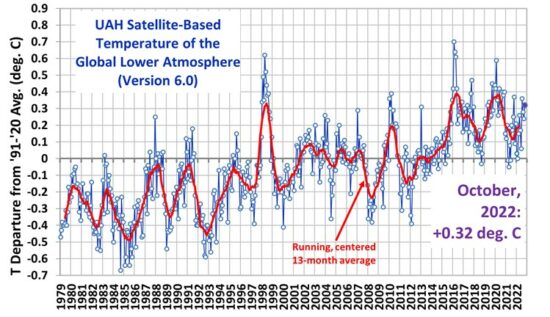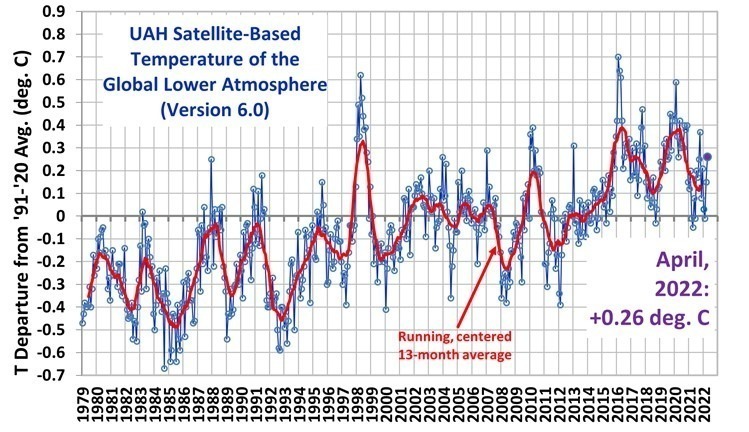
At left (Above) is a screen shot from the Greenpeace web site, from a video which drips with the urgency of stopping the “melting” of the Arctic Ice Pack.
But look closely: Those are shear lines, where the ice has broken, not “melted”. Melting does not occur in particular paths across the ice sheet, except when being zapped by aliens in UFO’s.
Note closely the comment “more severe storms that wreak havoc on our home and communities”.
It has become most popular to blame global warming ( and man ) on virtually everything under the sun. And we mustn’t forget to throw in a non-sequitur related to the “elderly and poor” – whose beachfront condos will soon be under water, no doubt.
But a new study released in Jan, 2008 by Chunzai Wang, a research oceanographer at the National Oceanic and Atmospheric Administration’s Miami Lab and the University of Miami, suggests that Global warming could actually reduce the number of hurricanes that hit the United States. Wong found a link between warming waters, especially in the Indian and Pacific oceans, to increased vertical wind shear in the Atlantic Ocean near the United States And wind shear – a change in wind speed or direction – makes it hard for hurricanes to form, strengthen and stay alive. His conclusion is, “Global warming may decrease the likelihood of hurricanes making landfall in the United States,”
His study is published in Geophysical Research Letters.
The global warming hysterians very typically use photos of perfectly normal weather phenomena to promote panic ( and presumably, donations to their cause ). Particularly popular are videos of calving glaciers, which break off and create quite a splash when they hit the water. But any 10-year-old knows that a calving glacier is a result of a growing, not receding glacier. A receding glacier, well… recedes…and calves no more.
To make a very long story much shorter, the warmer oceans have indeed been selectively melting some portions of the Arctic Ice Cap, but severe storms created large waves which broke up, rather than melted a substantial portion of the edges of the polar ice. This re-freezes in the winter. And you don’t have to panic: the cold winter of 2007-2008 has returned the arctic ice cap to a handsome 13,000 000 square kilometers – which may melt again in normal summer melting cycle. There’s tons of research going on in this field as well.
And about those “melting glaciers…”
| Strange how our research turned up a completely different story. We found 50 glaciers are advancing in New Zealand, others are growing in Alaska, Switzerland, the Himalayas, and even our old friend, Mt. St. Helens is sprouting a brand new crater glacier that is advancing at 3 feet per year.And down south last September, NASA satellites showed the Antarctic Ice Field to be the largest it has ever been in the 30 years it has been observed by satellite (based on an analysis of 347 million radar altimeter measurements made by the European Space Agency‘s ERS-1 and ERS-2 satellites). | |
|
|
|
|
The terminus of Tsaa Glacier in Icy Bay in July 2005. Photo by Chris Larsen, Geophysical Institute, UAF
The terminus of Tsaa Glacier in June 2007 after a recent advance of the glacier. Note the position of the large waterfall. The glacier advanced about one-third of a mile sometime between August 2006 and June 2007. Photo by Chris Larsen, Geophysical Institute, UAF |
|
Al Gore tells us the Greenland ice cap is thinning, but he doesn’t mention that a newly discovered volcanic “hot spot” may be a contributor, along with warming on the coast due to warmer waters coming up the gulf stream. In general, we found growing glaciers outpacing melting glaciers by a good margin. Nothing like cherry-picking an isolated example to create panic, Al.
 Our Oceanography friends tell us that the actual measured rise in average ocean levels is on the order of 1.6 millimeters (about the width of a match ) annually. There are 25.4 mm in an inch, so in 25 years, the oceans might be up about 1.5 inches or so if the trend continues. In a thousand years, it will be up a whopping 64 inches, and everyone but the NBA is clearly in serious trouble.Al Gore, on the other hand, recently said the problem is much worse than previously thought, and the Polar Ice Cap will be completely gone in 5 years.We’re going to hold you to that, Albert. We wonder if anyone has ever had a Nobel Prize taken back… Our Oceanography friends tell us that the actual measured rise in average ocean levels is on the order of 1.6 millimeters (about the width of a match ) annually. There are 25.4 mm in an inch, so in 25 years, the oceans might be up about 1.5 inches or so if the trend continues. In a thousand years, it will be up a whopping 64 inches, and everyone but the NBA is clearly in serious trouble.Al Gore, on the other hand, recently said the problem is much worse than previously thought, and the Polar Ice Cap will be completely gone in 5 years.We’re going to hold you to that, Albert. We wonder if anyone has ever had a Nobel Prize taken back… |
If you make a quick knee-jerk assumption, you’d probably conclude that something has to be melting somewhere to cause such a steady rise, however miniscule. But there’s another principle of physics at work here called thermal expansion. When you heat an object, it gets bigger. Since the oceans have been slowly warming over the past few centuries, the volume of the oceans has also been increasing a tiny bit, and that can possibly account for most, if not all, of the 1 mm per year rise in the average sea level.
Old glaciers are a wonderful repository of historical information, because past samples of earth’s atmosphere are locked up in them. Coral heads and Sargasso Sea sediments also leave Carbon 14 and Oxygen 18 clues to the past temperature of the earth. We all agree that the historical CO2 curves and the temperatures curves closely match each other. But when we look closely at the CO2 and temperature data found locked in ancient ice core samples, we find that increases in CO2 are actually following increases in temperature and that CO2 doesn’t cause warming – warming causes CO2 to increase.
Continued at ‘Primer 10: Summary, What we Learned’






